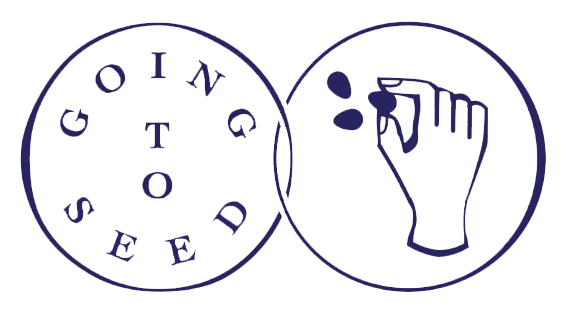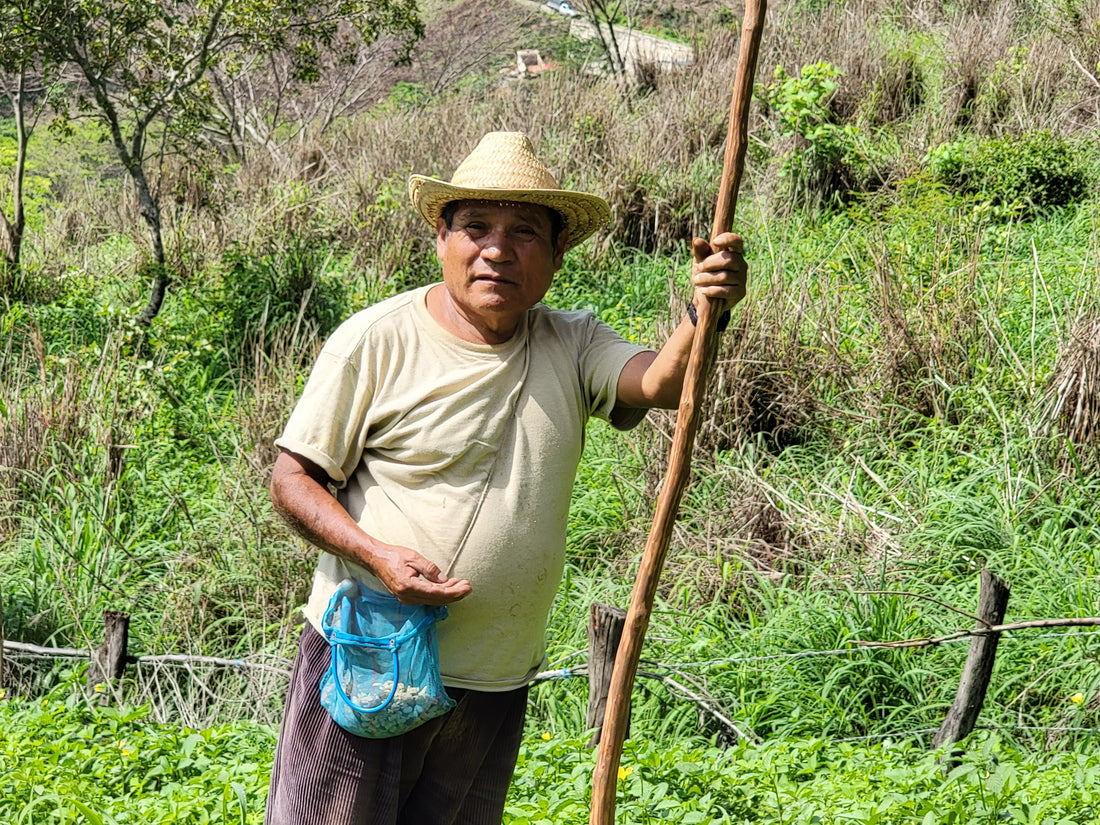photo: Don Enrique with his planting stick and seeds
by Julia Dakin
From December to April, I traveled across California with Going to Seed, sharing insights with local gardening groups. Drawing inspiration from Joseph Lofthouse and the farmers of Southern Mexico, I taught gardeners how to adapt to their local conditions and community preferences. Through these experiences, I realized that the most valuable lesson I can impart is to encourage gardeners not to blame themselves for plant failures but instead to take a step back and invite Nature back into their gardens.
In a remote village in Oaxaca, Mexico, where the ancestors of today's farmers domesticated many beloved food crops like corn, beans, and squash, an exchange took place between two farmers, Don Enrique and Bartolo. Bartolo used a phone camera I had given him for these conversations, and as they walked through the fields, Bartolo asked Don Enrique, "Do you have pests or diseases that attack the corn?"
Don Enrique replied, "Yes, sometimes a weevil attacks the milpas."
Bartolo asked, “Do you use pesticides, or what do you do?”
Don Enrique: "I leave it in the hands of God. There is a harvest, even if I don't kill the weevil."
Don Enrique's nephew is my friend Jose, who told me later: "From my perspective, it’s not in the hands of God, but we know that only the weaker plants will die from the pests. We keep seeds to replant from the strong plants every year.”
These farmers, whose ancestors had been cultivating the same land for over 300 generations, have a fundamentally different approach to agriculture than what I was used to. Patiently doing “nothing” is how they show pride in their seeds. Their focus is on the long-term resilience and adaptability of their crop genetics, and one of the main criteria for being worthy of passing on is thriving in its current location, without fertilizers, pesticides, or extra care.
This hands-off approach, rooted in generations of experience and a deep connection to the land, offers a powerful alternative to the commercial mindset that growers in industrialized countries unconsciously hold.
Back to our gardens
Let’s try an experiment: Walk out to your garden and find a struggling plant. Maybe it’s a tomato with blossom end rot, a squash getting eaten by slugs, or a yellow bean seedling.
 Blossom end rot (BER) is a genetic problem, not a calcium problem. Blossom end rot (BER) is a genetic problem, not a calcium problem.
|
 Aphids attacking a single fava plant and ignoring the others. Aphids attacking a single fava plant and ignoring the others.
|
What is the first solution that comes to mind for this plant? What would a gardening advisor tell you to do?
If you ask a gardening Facebook group for ideas on blossom end rot, you will likely get dozens of responses telling you that you need to water more consistently, add calcium to the soil, or use row cover, neem oil, foliar sprays, or a host of other natural or artificial solutions that will cost you money, take lots of time, harm pollinators, or add microplastics to the soil.
The food gardening space is full of short-term fixes that rarely address the root cause: that your seeds are from far away and were bred for conditions different from your garden’s.
If you have an abundance of struggling plants, you might feel like a bad gardener or that you’ve failed; it’s stressful to stay on top of every disease your tomatoes might have and treat all of them. When everything is your fault because you didn’t do enough to create the perfect environment for your crops, it can feel demoralizing. But take heart: Don Enrique does not blame himself when plants don’t thrive, and his ancestors invented agriculture.
Leaving it to God, or natural selection, is relaxing and empowering. It’s as good for the species and planet as it is for the gardener. If a plant is not doing well in your garden, it doesn’t belong there, simple as that.
The next time you see a plant going through stress, do three things instead of rushing to solve the problem:
- Look for the healthier plants and celebrate their ability to thrive in challenging conditions.
- Thank the pests, and/or a higher being of your choice, for being there to teach your plants how to be strong.
- Honor the whole process by saving and sharing seeds from the strongest plants.
As Joseph Lofthouse says: “I welcome bugs, viruses, and molds into my garden, because they are teaching my plants how to survive. They’re selecting for plants that thrive in my ecosystem, exactly as it exists.”
Adopting this mindset is also part of a sustainable future. As Cary Fowler says in the documentary Seeds of Time: “So much of food production in this world of ours is based on how we’re trying to modify the environment to suit the crop variety in the field. If there’s not enough water, you irrigate. If the pests and diseases come, you spray the crop. And I think in the future if we really want to talk about sustainability and adaptation to climate change, we’re going to need to do the opposite to that. We adapt the crop variety to the environment.”
Re-learning the ancestral art of adapting the crop to the environment could be one of the most important steps we can take to grow delicious and healthy food for our families and communities.
To see the video where the above exchange took place, and for more perspectives from Southern Mexico, take our free course.

